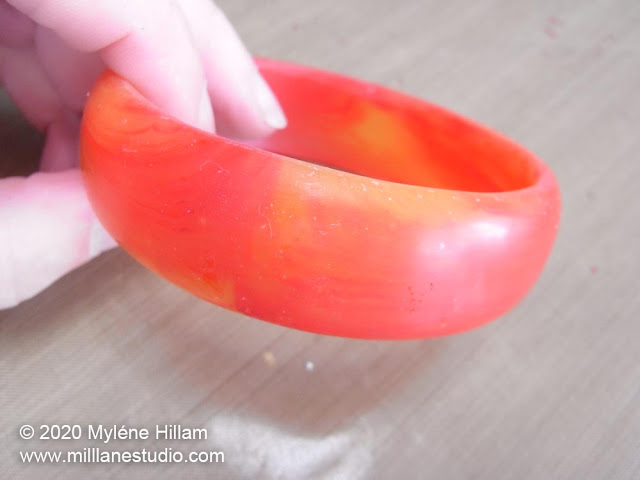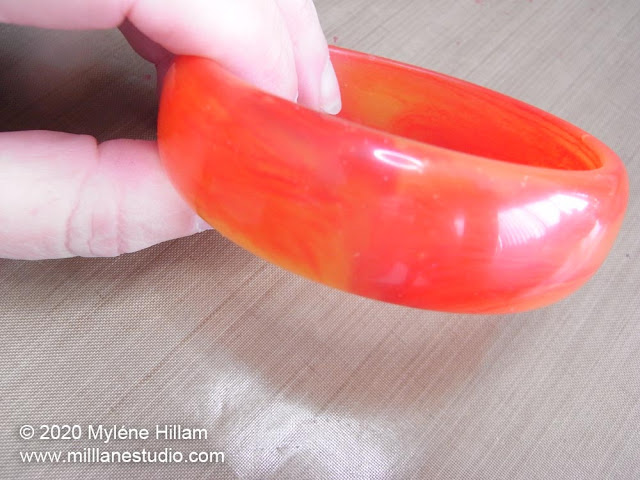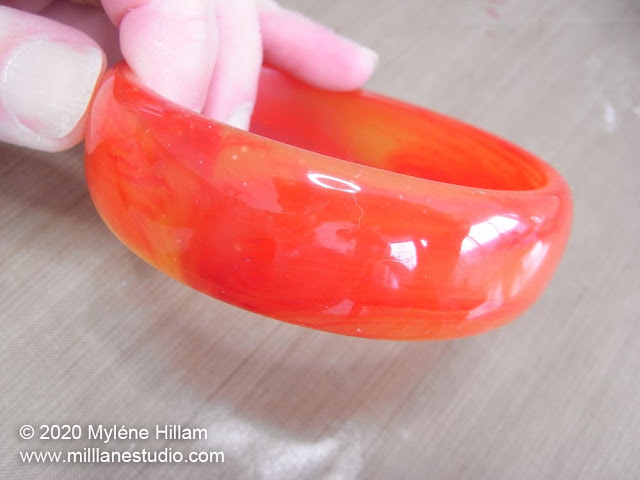Are you a fan of smooth, glossy resin and the way the light makes the colour look so rich and vibrant?
Does it make your heart sing when you see that highly polished, light-reflecting surface that you can see reflections in?
Or do you prefer the look of matte resin and the way light is absorbed by it, giving it a flat, frosted, almost sea-glass look?
It's definitely a personal preference and there are plenty of pluses for both looks.
But most people new to resin jewellery making want their resin to be glossy.
And how do I know this?
Because it's one of the most-asked questions by new Resinistas,
"Why isn't my resin shiny when I take it out of the mould?"
The anticipation and excitement they feel as they demould their first resin piece soon turns to disappointment when the resin comes out with a matte finish.
But why does that happen sometimes?
If the back is shiny and glossy, then why isn't the front?
Well, there's actually a very simple answer to this question...
It all depends on the surface of your mould.
If the mould was made from a glossy object like a highly polished glass ring, the surface of the mould will be as shiny as the glass too. But more importantly, so will every resin piece you cast from it.
Take a look at the inside of this ring mould...
You can see that it's shiny. That means the castings will be shiny too!
On the other hand, if the mould was made from a matte object like the ring mould below, then every resin piece you cast from the mould will also be matte.
To see what that looks like in real life, I cast resin into each of these two ring moulds. I mixed up and coloured enough resin to fill the two moulds so that the colour in each one would be identical.
And yet, look how different they are from each other (other than the shape, that is!).
On the left, the matte ring and on the right, the glossy ring. Both are beautiful in their own right and it's just a matter of personal taste or the look you're after as to which one you'd choose.
The matte resin absorbs the light, making the colours softer and more subdued. In the glossy ring, the colours are more saturated and vibrant.
It not only demonstrates the two different finishes, but it also shows how the texture of the mould influences the way we see the colour!
How Do You Make Resin Shiny?
The easiest way to get shiny resin is to use a mould with a shiny surface.
But if your resin piece has a matte finish, are you stuck with it? Can you make matte resin shiny?
There is a way!
You CAN get that highly polished look if you've started out with a less-than-glossy mould.
Take this bangle with its smooth, satin finish. It reflects some light but it's not what you'd call glossy.

You can bring the resin up to an impressive gloss finish like I did with the bangle above, using a bit of elbow grease and the Micro-Mesh polishing system. The super fine grades are what make this type of sanding kit excellent for polishing resin.
The system has 9 wet/dry sanding pads in grits ranging from 1500 right up to 12,000. And each pad has a foam core, so it's more comfortable to work with than conventional sandpapers.
Resin dust is very fine so use the sanding pads with water to catch the resin dust and you won't have to wear a dust mask.
The secret to sanding is to use light pressure and switch sanding directions with each grade.
If you work your way up successively through each of the grades, you'll achieve a glossy finish on the resin, like the bangle below.
You can take it up an extra notch to an ultra-high gloss finish by buffing the resin with Flitz liquid abrasive and a soft flannelette or microfibre cloth.
You can take it up an extra notch to an ultra-high gloss finish by buffing the resin with Flitz liquid abrasive and a soft flannelette or microfibre cloth.
This liquid polish is non-abrasive and non-toxic, and it does a remarkable job of adding that high-gloss look.
This last step gives the resin a glass-like finish that you can see reflections in.
This last step gives the resin a glass-like finish that you can see reflections in.
So if you're resin pieces seem dull and lifeless when you remove them from the mould, bring them to life by polishing them. It takes a bit of patience and elbow grease, but it's totally worth the effort!
PIN THIS TIP!









